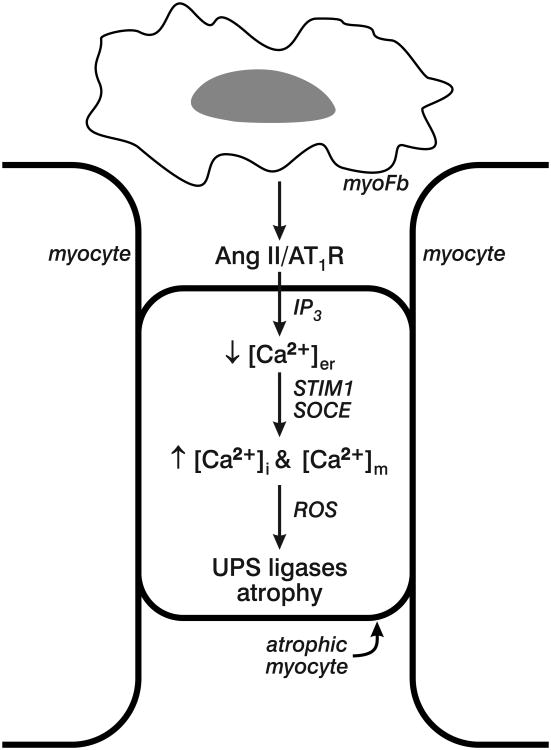Figure 3.
Myofibroblast (myoFb) cross-talk with neighboring myocytes via paracrine signaling involving de novo angiotensin (Ang) II generation and AT1 receptor binding. Ensuing IP3 stimulation leads to the release from and subsequent fall in endoplasmic reticulum [Ca2+]er whose Ca2+ sensor, STIM1, in turn, is then activated to promote store-operated Ca2+ channel entry (SOCE) to raise cytosolic [Ca2+]i and mitochondrial [Ca2+]m. Ensuing oxidative stress and reactive oxygen species (ROS) activate proteolytic UPS ligases (MuRF1 and atrogin-1) leading to myocyte protein degradation with resultant atrophy.

